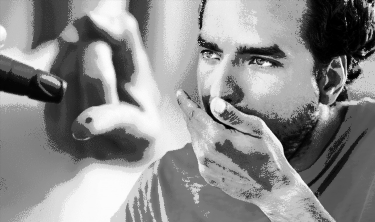Type 2 diabetes can be a 'devastating diagnosis' says expert
We use your sign-up to provide content in ways you’ve consented to and to improve our understanding of you. This may include adverts from us and 3rd parties based on our understanding. You can unsubscribe at any time. More info
Diabetes is a lifelong condition that causes a person’s blood sugar level to become too high. It is the result of problems with the way the body produces insulin – a hormone responsible for regulating blood sugar. If your breath smells of “pear drops” it can signal your body is running out of insulin and this can have grave consequences.
Diabetic ketoacidosis (DKA) is the term used to describe this complication faced by people with diabetes.
“DKA is most commonly associated with type 1 diabetes, however, people with type 2 diabetes that produce very little of their own insulin may also be affected,” explains Diabetes.co.uk.
According to the health body, one telltale sign you’re running out of insulin is an “unusual smell on the breath – sometimes compared to the smell of pear drops”.
A pear drop is a British boiled sweet made from sugar and flavourings.

Other warning signs include:
- Vomiting
- Dehydration
- Deep laboured breathing (called kussmaul breathing) or hyperventilation
- Rapid heartbeat
- Confusion and disorientation
- Coma.
How serious is DKA?
According to the NHS, DKA can be life-threatening if it’s not found and treated quickly.
The health body continues: “Go to your nearest A&E immediately if you think you have DKA, especially if you have a high level of ketones in your blood or urine.”
As it points out, DKA is an emergency and needs to be treated in hospital immediately.
DON’T MISS
Dementia: ‘Commonly prescribed’ antibiotics linked to decline [ADVICE]
Matt LeBlanc health: Star almost had ‘nervous breakdown [INSIGHT]
Cancer warning: Steatorrhoea in your poo is a sign [TIPS]
Call your diabetes team or GP as soon as possible if you’re not sure whether you need emergency help – for example:
- Your blood sugar or ketone levels are high or getting higher over time, but you do not feel unwell
- You feel unwell but your blood sugar or ketone levels are normal or Are only a little bit higher than usual.
Other signs of uncontrolled diabetes include:
- Kidney disease
- Glaucoma
- Alzheimer’s disease
- Stroke.
Type 1 and type 2 – what’s the difference?
The main difference between type 1 and type 2 diabetes is that type 1 diabetes is a genetic condition that often shows up early in life, and type 2 is mainly lifestyle-related and develops over time.
Diabetes UK explains: “With type 1 diabetes, your immune system is attacking and destroying the insulin-producing cells in your pancreas.”

According to the health body, “both are as serious as each other. Having high blood glucose (or sugar) levels can lead to serious health complications”.
How to lower high blood sugar levels
If you have type 1 diabetes, blood sugar levels are managed by taking insulin.
You have more options at your disposal if you have type 2 diabetes. These include through medication, exercise and diet.
Arguably the most important dietary tip is to limit certain carbohydrates because they are broken down into blood glucose (sugar) relatively fast and therefore have a pronounced impact.

The GI is a rating system for foods containing carbohydrates. It shows how quickly each food affects your blood sugar (glucose) level when that food is eaten on its own.
The higher the rating, the quicker the food is broken down, which has a more marked impact on blood sugar.
High GI foods include:
- Sugar and sugary foods
- Sugary soft drinks
- White bread
- Potatoes
- White rice.
Low or medium GI foods are broken down more slowly and cause a gradual rise in blood sugar levels over time.
They include some fruit and vegetables, pulses and wholegrain foods, such as porridge oats.
Source: Read Full Article
